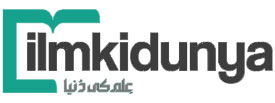-
 Home
Home
-
 News
News
Latest Educational News Stories
Daily update of all national, international news, picture stories, college / university announcements and educational events.
-
 Colleges
Colleges
Pakistan's Largest Database of Colleges and Universities
Explore Largest Directory of Private and Govt. Colleges, Universities and find best institute for your future Education.
-
 Courses
Courses
-
 Admission
Admission
-
 Lectures
Lectures
-
 Online Test
Online Test
Short Question
- 9th Class Physics Short Questions
- 9th Class Chemistry Short Questions
- 9th Class Math Short Questions
- 9th Class Biology Short Questions
- 9th Class Computer Short Questions
- 9th Class English Short Questions
- 10th Class Physics Short Question
- 10th Class Chemistry Short Question
- 10th Class Math Short Question
- 10th Class Biology Short Question
- 10th Class Computer Short Question
- 10th Class English Short Question
-
 Past Papers
Past Papers
-
 Date Sheets
Date Sheets
-
 Results
Results
Exam Results 2024
Check online Results 2024 Matric Inter BA BSc B.Com MA MSc M.Com CSS PCS MCAT ECAT of all educational boards and universities in Pakistan
-
 Study Abroad
Study Abroad
Study Abroad Programs and Opportunities for Pakistani Students
Explore free study abroad search to find programs, consultants, events to study in USA, UK, Australia, China, Malaysia and many others.
-
 Jobs
Jobs
-
 Tutors
Tutors
-
 More
More
-
 Apps
Apps
This online test contains MCQs about following topics:.
- Introduction - Translation and Rotation of Axes - Equations of Straight Lines - Two and Three Straight Lines - Angles Between Two Lines - Homogeneous Equations-Second Degree in2 Variables
FA Part 2 Mathematics Ch 4 Test

FA Part 2 English Medium Subjects
FA Part 2 Urdu Medium Subjects
MCQ's Test For Chapter 0 "FA Part 2 Mathematics Chapter 4 Test Online"
Try The MCQ's Test For Chapter 0 "FA Part 2 Mathematics Chapter 4 Test Online"
-
Total Questions20
-
Time Allowed30
Question # 1
The distance between the points (1, 2), (2, 1).
Question # 2
If (x, y) are the coordinate of a point ordered pair is called:
Question # 3
The ratio in which x-axis divides the line segment joining the points:
Question # 4
If the inclination of a line lies between ]90°, 180°[, then the slope of line is :
Question # 5
x = 4 is a line:
Question # 6
If the directed distances AP and PB have the opposite signs, i.e; p is beyond AB, then their ratio is negative and P is said to divide AB:
Question # 7
If (1, x) is the mid point of the line segment joining the points (1, 2) & (1, 6) then x =
Question # 8
The point of intersection of internal bisectors of the angles of a triangle is called:
Question # 9
If in the case of translation of axes, O (-3, 2), (x, y) = (-6, 9) then (X, Y) =
Question # 10
The equation to the straight line which passes through the point (2, 9) and makes an angle of 45° with x-axis is:
Question # 11
ax + by + c = 0 has matrix from as:
Question # 12
A linear equation in two variables represents:
Question # 13
y = 2x + 3 is the;
Question # 14
If (2, 1) is the mid point of the line segment joining the points (2, x) & (2, -5) then x =
Question # 15
Angle between the lines x + y + 1 = 0 & x - y + 4 = 0 is:
Question # 16
If the inclination of the line l lies between ]0°, 90°[, then the slope of l is:
Question # 17
A quadrilateral having two parallels and two non-parallel sides is called:
Question # 18
If a = 0, then the line ax + by + c = 0 is parallel to:
Question # 19
The line x = a is on the right of y - axis if:
Question # 20
The line y = a is below the x-axis, if:
12th Class Mathematics Chapter 4 Test
Here you can prepare 12th Class Mathematics Chapter 4 Introduction to Analytic Geometry Test. Click the button for 100% free full practice test.
Top Scorers Of Chapter 0 "FA Part 2 Mathematics Chapter 4 Test Online" MCQ`s Test
-
Y Yousaf Khan 27 - Mar - 2024 03 Min 03 Sec 18/20 -
M Muhammad Faheem 07 - Jul - 2024 04 Min 58 Sec 18/20 -
S Sarkar Jehan 29 - Jun - 2022 20 Min 30 Sec 16/20 -
A ABID PERVAIZ 19 - Jan - 2025 02 Min 17 Sec 15/20 -
M Muneeb Ahmed 21 - Apr - 2023 06 Min 13 Sec 15/20 -
M Mushraf Mushraf 26 - Feb - 2022 04 Min 01 Sec 14/20 -
M Malik Shakeel 23 - Jun - 2023 08 Min 44 Sec 14/20 -
M Mian Ahtisham 06 - Feb - 2022 03 Min 02 Sec 13/20 -
M maryam zafar 07 - Dec - 2023 09 Min 56 Sec 13/20 -
T Talia Khalid 07 - Jun - 2023 07 Min 06 Sec 12/20 -
A Abdullah Kaleem 29 - Jan - 2024 07 Min 21 Sec 12/20 -
D Dileep Moolani 05 - Jul - 2023 08 Min 51 Sec 12/20 -
H Hamza ilyas 27 - Apr - 2018 20 Min 40 Sec 12/20 -
A A__M __k 17 - Apr - 2023 05 Min 32 Sec 11/20 -
Z Zaryab Shah 05 - Aug - 2022 12 Min 29 Sec 10/20
FSc Part II Mathematics Chapter 0 Important MCQ's
| Sr.# | Question | Answer |
|---|---|---|
| 1 | For any point (x, y) on x-axis: |
A. y = 1
B. y = 0
C. y = -1
D. y = 2
|
| 2 | y-coordinate of any point on X-axis: |
A. 0
B. x
C. y
D. 1
|
| 3 | If the directed distances AP and PB have same signs, then their ratio is positive and P is said to divide AB: |
A. Internally
B. May be divide
C. Externally
D. None of these
|
| 4 | Point of intersection of lines x - 2y + 1 = 0 and 2x - y + 2 = 0 equals: |
A. (1, 0)
B. (0, 1)
C. (-1, 0)
D. (0, -1)
|
| 5 | If (2, 1) is the mid point of the line segment joining the points (2, x) & (2, -5) then x = |
A. 1
B. 2
C. 7
D. -7
|
| 6 | y = mx + c is the equation of straight line in: |
A. Slope-intercept form
B. Two points from
C. Point slope form
D. Intercepts form
|
| 7 | The line l is horizontal if and only if slope is equal to: |
A. 0
B. 1
C. 2
D. undefined
|
| 8 |

|
A. Line parallel to x-axis
B. Line parallel to y-axis
C. Line passing through the origin
D. Both (a) and (b)
|
| 9 | Angle between the lines x + y + 1 = 0 & x - y + 4 = 0 is: |
A. 30°
B. 45°
C. 60°
D. 90°
|
| 10 | The point of intersection of the medians of a triangle is called: |
A. Centroid
B. Ortho-center
C. Circums-center
D. In-center
|








.jpg)

























Share your comments & questions here
No comments yet. Be the first to comment!